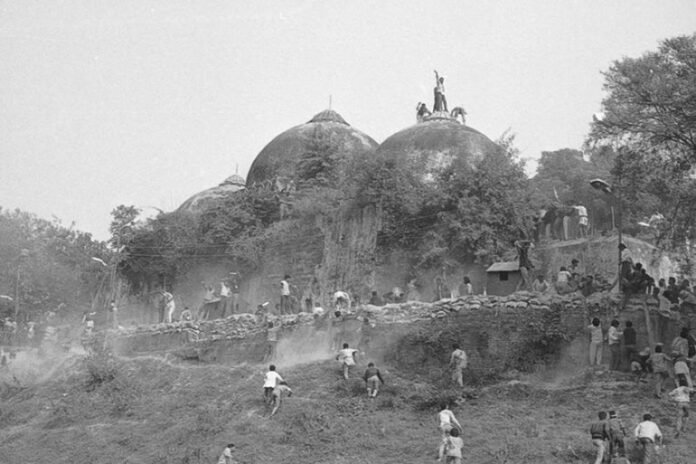An Account of the Babri Masjid’s Past: A Story of Religion, Politics, and Disagreement
One of the most contentious and long-lasting conflicts in modern India has its roots in the Babri Masjid, a building in Ayodhya, Uttar Pradesh. Delving into its beginnings, the debates surrounding it, and its impact on Indian society and politics, this article explores the complicated history of the Babri Masjid.
The History and Design


An official of the Mughal Emperor Babur named Mir Baqi is said to have built the Babri Masjid between 1528 and 1529 CE. Constructed in the then-popular Mughal architectural style, the mosque bears the name of Babur. It had a spacious central courtyard with a classic three-domed roof. Building the mosque on land that many Hindus believe to be the birthplace of Lord Rama, a central figure in Hinduism, added another degree of theological complexity to its already weighty religious significance.
Lord Rama’s Birthplace: A Belief that Dates Back Centuries


As the site of Lord Rama’s birth, Ayodhya has long been held in high esteem. One of the holiest books in Hinduism, the Ramayana, describes Ayodhya as the site of Rama’s birth. As a result of this belief, the location of the Babri Masjid became contentious, as several Hindus asserted that a temple commemorating Rama’s birthplace was destroyed to construct the mosque.
The Conflict: A Meeting of Beliefs
A religious debate soon escalated into a political and legal struggle over the Babri Masjid. Incidents of violence involving the location were first documented in the nineteenth century. In the twentieth century, rival claims to the site by Hindu and Muslim factions escalated the dispute.
After Independence
In 1949, after the installation of Rama idols within the mosque greatly intensified tensions, this disagreement resulted in the shutting of the mosque’s gates.
Conflicts in Politics and the Law


The Babri Masjid controversy sparked decades of political and religious unrest in India. Prolonged court fights ensued as a result of multiple legal cases launched by both Muslim and Hindu groups. As different political groups exploited the disagreement to galvanize their supporters, the situation became more politicized, which in turn exacerbated tensions within the community.
The Deconstruction and What Remains of It
Demolishment of the Babri Masjid by a mob of Hindu activists on December 6, 1992, was the most sad and momentous event in the mosque’s history. As a consequence of these events, communal riots broke out all throughout India, killing nearly 2,000 people and further dividing the country along religious and social lines.
The Ram Temple and the Supreme Court’s Decision
In a landmark decision handed down in November 2019, the long-running controversy surrounding the Ram Temple in Ayodhya, a town in Uttar Pradesh, India, finally came to an end. The Babri Masjid, a mosque built in the 16th century, and the plot of land traditionally thought to be the birthplace of Lord Rama, a prominent Hindu god, were at the center of this historic legal and cultural case.
The ruling by the Supreme Court was the last straw in a political and theological debate that had raged for decades. It determined that a Hindu temple would be built on the disputed ground by a trust, while a mosque would be built on a separate five-acre tract in Ayodhya. This landmark decision in India’s legal history attempted to put an end to a divisive matter that had provoked extensive sectarian tensions and bloodshed, especially in the years after the 1992 destruction of the Babri Masjid.
The ruling was a long time coming, and it was noteworthy for trying to strike a compromise between the historical and religious demands of Muslims and Hindus. This landmark case in India’s judicial history demonstrated the difficulties of balancing strongly held religious beliefs with secular legal norms and constitutional standards. In a country sometimes riven by religious strife, the decision was generally greeted with open arms as a means of healing and peace.
The emphasis changed from the verdict itself to the nonviolent execution of the court’s decision, which mirrored India’s continuous path towards religious tolerance and legal order.
Conclusion: A Mirror of the Multi-Faceted Fabric of India


The story of the Babri Masjid is more than that of a building; it is a tale that weaves together religion, politics, and individuality. In a country like India, where mythology and history frequently blend, and where different faiths can bring people together or drive them apart, this shows how complicated Indian society is. An inspiring tale of faith and the difficult road to tolerance in a multicultural society, the Babri Masjid’s history is a sobering reminder of these things.




